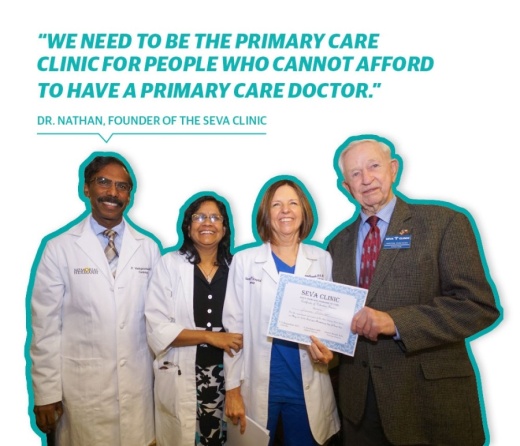How has the SEVA Clinic grown since it opened?
We now see routinely 25 patients a week. That is our limit also because we have two physicians. We have two exam rooms [and] are continuing to sell generic medications and do lab tests as well. On June 18, we are going to resume [and take] everything back to normal at the clinic, but phone and video visits will still be available. If patients have COVID-19 symptoms, we will be happy to help them on the phone.
The big change is that we are now doing appointments. Patients can call and go to website and secure a time slot. They will be asked to come in only three patients at a time. That’s better for the patient and for everybody because of the social distancing. We are putting sneeze guards in place for volunteers. I am in the process of procuring [personal protective equipment] for the clinic.
Are the appointments new changes with COVID-19, or was the clinic going to add that anyway?
Appointments are specific to social distancing, but it’s good because now, patients don’t have to wait for two hours. If you come on a Thursday, there will be 40 people in the waiting room. If you come at 5:30 p.m., the whole area is full, and people are waiting outside. We get ready by 5 or 5:15 p.m., and many days, I don’t get done by 8 p.m.
Jim and Hita Dickson are in the process of getting a bigger space for their facility, Christian Helping Hands, and SEVA Clinic will likely move there, and then, we could probably start seeing patients more times a week. But that is five years down the line; they have only just bought the land.
Is there anything you see a lot of patients come in for?
A lot of patients do not have primary care physicians. We need to be the primary care clinic for people who cannot afford to have a primary care doctor. We have the scope to do more things, like imaging, X-rays and cardiographs, but that will come when we have more space to do those things. I have just been steadily increasing services to the extent that it runs smoothly. I don’t want it to go large-scale in a short time and then [not be able to] keep up with it.
Have you found there is a large uninsured population in the area?
Yes. I think it is going to get worse as the economic impact grows. People are going to lose jobs, and there is going to be much more need. If an individual is under the poverty line, they can get Medicaid. A lot of people are not in that level—they may make $30,000 or $40,000 a year, but that is not enough for a big family. Even if someone has insurance, but with a large deductible, they come to the clinic. If there is more unemployment in the next year, and there will be, they may lose their insurance. The need for the services is going to increase.





